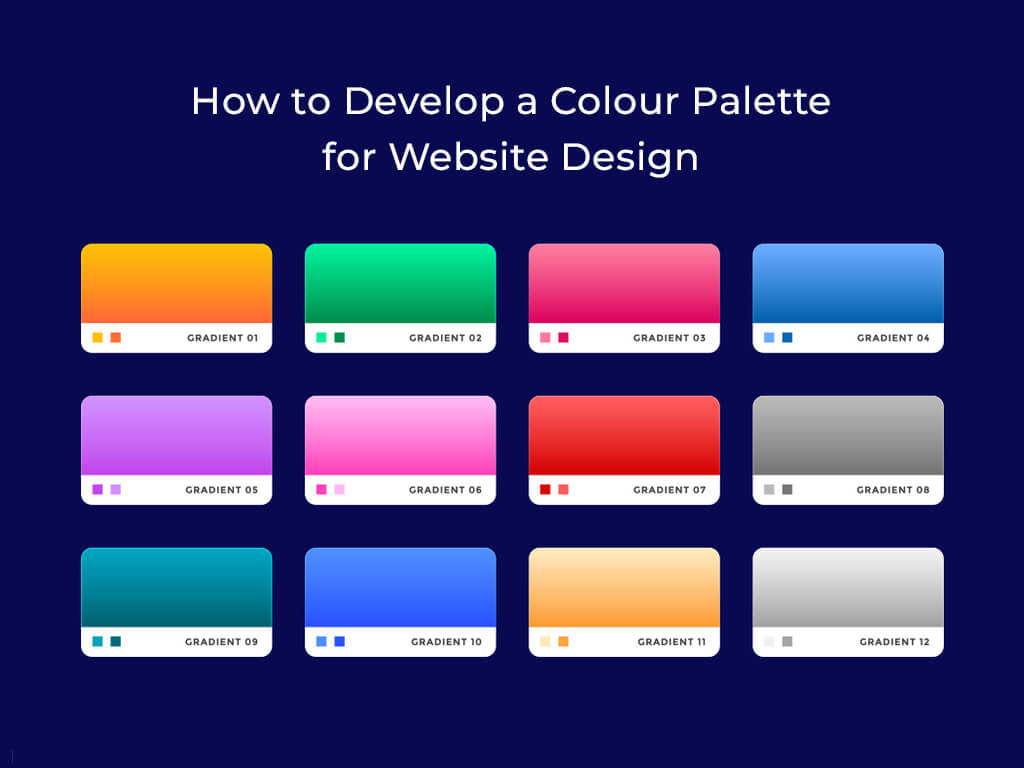Colour palette for website design – When it comes to website designing, colour is one of the most powerful tools. Use it to attract attention, express meaning, create desire, drive conversions, and even earn the loyalty of a customer by demonstrating your expertise in the field. In the same way, layout and copywriting can affect how a visitor interprets what they see when done correctly, good colour choices require careful planning.
However, when it comes to web design, selecting the right colour palette is one of the most crucial decisions you’ll make. Some of the most basic colour contrast principles in website designing have been broken down for your convenience, so you can better understand how you can use colour wisely in your business to maximise results.

What Is a Colour Palette for Website design?
A website colour palette is a set of colours that you use in the design of your website. You’ll use these colours consistently across the entire website.
In designing a colour scheme for website design, consistency is one of the most important factors to consider. Because brand personality is so important to a successful website and business, sticking to a consistent colour palette for website design helps to solidify your brand identity by creating associations between your brand and your audience via your frequent use of colour and styling.
Why Website Colour Palette Is Important?
- A company’s colour scheme is how they brand will resonate in the minds of prospective customers. Website Colour schemes also visualize your brand messaging, which is why they influence a large part of your user experience.
- While web designers, we know that in the back of our minds as we design our websites, we are often wondering, even if subconsciously, about what type of first impression this design would make on my guest. One of the most important aspects of website colour schemes is initial impressions.
- The different colour palette for website design elicits distinct feelings and connections in the eye of the beholder, even if you don’t recognise it at first. Colour psychology is a topic in and of itself, which we will cover shortly.

How to Pick Colour Palette
Using the colour wheel and applying analogous, monochromatic, complementary, and triad colour harmonies is the simplest way to choose a colour blend or palette.
- Colour Models
Colour models are used to describe colours. Because there are literally millions of hues and remembering their names is impractical, colour models or standards were created to assist us in describing them. - The RGB Model
While working with screen-based designs, the RGB model is employed. Each of the light colours, Red, Green, and Blue, is given a value between 0 and 255. - The CMYK Model
For print production, the CMYK model is used to describe colours by their percentages of Cyan, Magenta, Yellow, and Black. The colour model CMYK is regarded as a “subtractive” colour model.
Understand What Each Colour Stands For
The colour scheme should be appropriate for the products and services you’re promoting. As previously said, it is critical to associate your product or service with a colour that is appropriate for your industry.

Colour Palette for Website Design: what to look for and how to utilise them
It’s one thing to understand colour theory; it’s quite another to select a vibrant colour palette for website design. Begin with what you already know.
Start with your brand colours if you already have a business, and then think of new colours to incorporate to complement your brand.
Your Target Audience: The colours you choose must also convey the feelings that your company wishes to convey. Determine who your target demographics are and what colours they prefer.
Colour trends provide good insight when building your websites and aid in the creation of a fresh and effective website.
Acknowledge what kind of emotions you want your website’s visitors to experience when they come.
Study the colour harmonies; while choosing a colour palette for website design, you’ll normally start with the dominating colour. Then you build up your colour palette layer by layer. Darker colours are more likely to be noticed first and provide more visual weight, before layering or introducing lighter colours.
Conclusion
Colours are all around us, and when used correctly, they may elicit any feeling or action from your audience. While colours are an important part of web design, they are not the only option. When it comes to website design, colour theory is just one of many factors to consider.
Now you understand how colours can make your brand stand out and connect with your audience on your website and in your logo.
Colour is a passionate expression of a person’s individuality. It has a strong impact on the audience’s emotions and behaviours, and it can cause viewers to unconsciously reveal sentiments and thoughts. Use colour psychology as a guide, but don’t be afraid to believe in your artistic ability.


